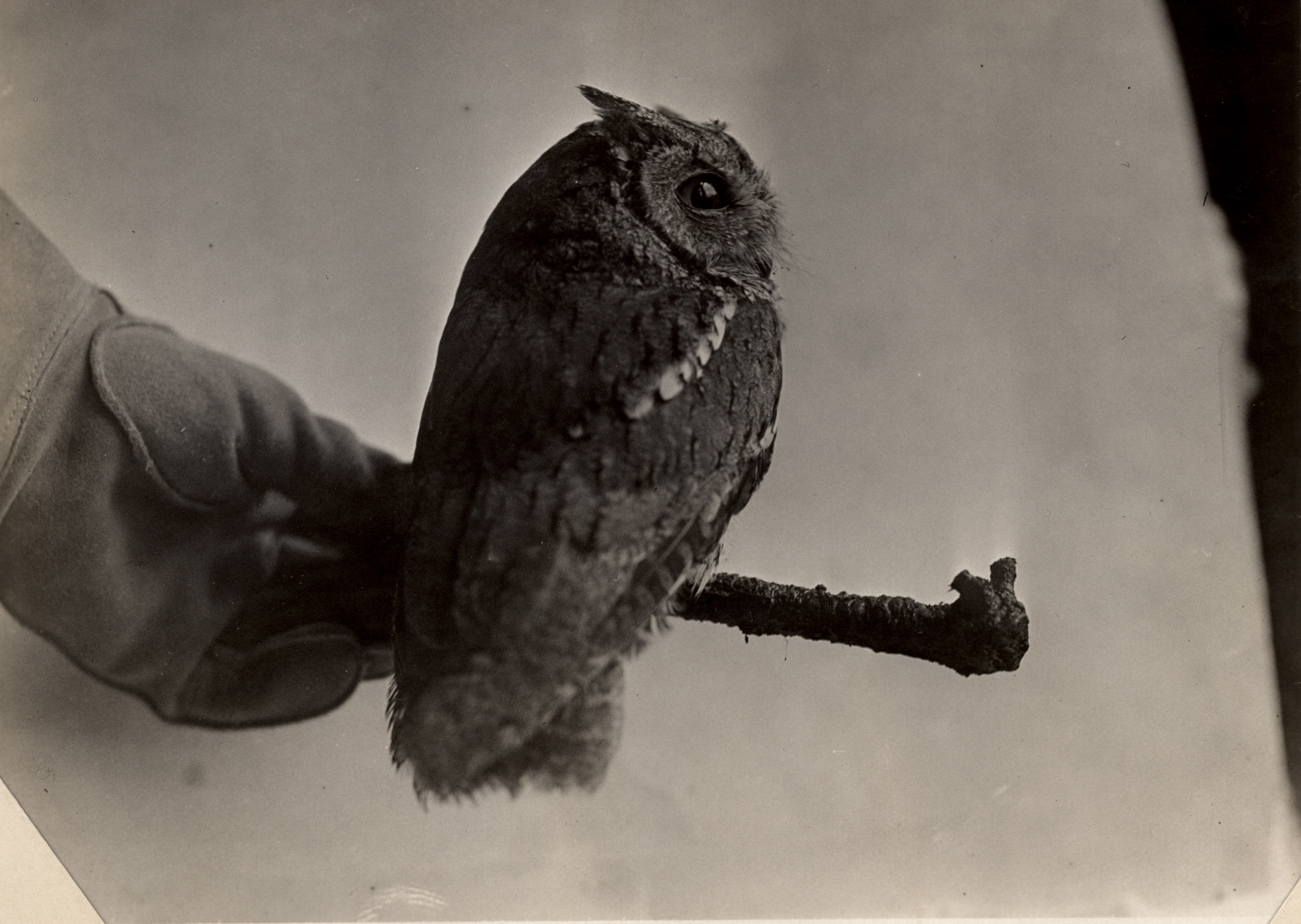Written by Masha Paramonova, a 3rd year student participating in URAP for fall 2016 and studying biology.
As I’ve already looked through hundreds of archived photos in the MVZ’s collection, it can be hard to pick a couple that stand out; among fantastic landscapes, animal species I’ve never seen before, eggs and nests, dirt around a hole dug by some variation of a groundhog, I came across a series of photos that, for lack of better terminology (and lack of wanting to use it), made my day.

S. Calif. Screech Owl – in life, at Museum; specimen from 6 mi. e. Coulterville, Mariposa Co. Cal., by. T. I. Storer, MVZ no. 2014
The series of photos I came across was that of a screech owl, taken in early 1916 and masterfully posed against a white backdrop or perched on a stick held by a gloved hand. Although this specimen was collected just outside of Coulterville in Mariposa County, California, the photos were taken at the old MVZ, a building that pre-dated the existence of the VLSB and current MVZ. I selected the first photo (above) because of its clarity and sharpness; the owl itself looks as if it is posing for the camera. This leads me to wonder how the photographer managed to obtain such crisp photos of a wild animal; was there bait involved, or did the classic “say cheese” suffice? Its erect ears show that perhaps it is guarded after being handled and photographed, but the specimen still appears somewhat friendly, if just for its fluffed body and short stature. I admire the contrast between the white sheet backdrop the owl is sat upon and the owl itself; although no color is found in this photograph, the detail seen in its feathers come through effortlessly in the half-sepia half-black-and-white photographic print.
As a contrast, take a look at the second photo (below). This profile shot poses this owl as a stronger creature due to its body language and positioning. We can still see fantastic clarity in feather and facial detail, and its ears are still in a guarded position. Although the first owl appeared to be cuter, as if posed by a mother for a holiday card, this second photo portrays a stronger, thoughtful, and even introspective owl. One can assume that the screech owl is far more comfortable perched on a branch than plopped onto a white sheet, and this particular owl shows its strength in the former setting.

S. Calif. Screech Owl – in life, at Museum; specimen from 6 mi. e. Coulterville, Mariposa Co., Cal., by T. I. Storer, MVZ no. 2017
Owls, however, are not important just for their relative cuteness and aesthetic appeal; scientists, researchers, and biologists have long studied and followed various species of owls. Joseph Grinnell, the first director of the MVZ, led many expeditions to collect owl specimens himself. Many species are still considered elusive, and many are too difficult to find due to ecological changes or the presence of other, more invasive, owls. Take, for example, some experimentation being done regarding the interactions between spotted and barred owls. Barred owls have placed themselves too far into the realm of spotted owls, out-competing them for resources. Additionally, a former UC Berkeley graduate and PhD. student, Rocky Gutiérrez, an avid owl researcher, donated money to the university to continue funding projects like his. Discoveries like his and work done by many other passionate scientists help us to better understand our ever-changing ecosystems.
Photographs like these are incredibly important, and I feel grateful having the opportunity to look back on them and know they still pose a relevance to current scientific pursuits. Personally, I look back on these photos if I’m having a bad day. I can find extra comfort, as well, in knowing that scientists out in the field are doing everything they can to protect and preserve as many species of owls as possible.
